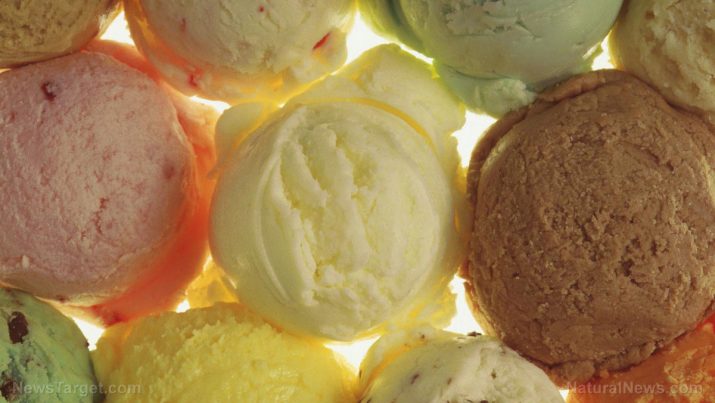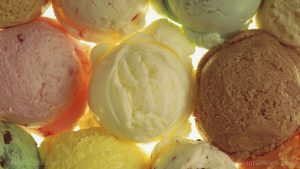
Ethyl vanillin – toxicity, side effects, diseases and environmental impacts
Tuesday, December 05, 2017 by Zoey Sky
http://www.naturalpedia.com/ethyl-vanillin-toxicity-side-effects-diseases-and-environmental-impacts.html

Ethyl vanillin is the first essence synthesized by human beings. It was successfully synthesized by Dr. M. Hallman and Dr. G. Twyman in 1874.
Ethyl vanillin is a chemically synthesized flavoring agent related to vanillin or artificial vanilla. It is three times as strong as artificial vanillin and acts as an imitation vanilla. In the preparation of edible flavor, ethyl vanillin can be used instead of vanillin.
The product appears as a white to light yellow needle crystal or crystalline powder. It has an aroma similar to vanilla beans, but it is more concentrated than vanillin.
Ethyl vanillin’s trade names and identifiers include:
- 3-Ethoxy-4-hydroxybenzaldehyde
- Ethylvanillin
- 121-32-4
- Bourbonal
- Ethylprotal
- Ethavan
- Ethovan
- Vanirom
- Vanilal
- Quantrovanil
- Vanillal
- Benzaldehyde, 3-ethoxy-4-hydroxy-
- 4-Hydroxy-3-ethoxybenzaldehyde
- Ethyl protal
Vanillin, ethyl- - Vanirome
- 2-Ethoxy-4-formylphenol
- Protocatechuic aldehyde ethyl ether
- Ethylprotocatechuic aldehyde

List of known side effects
Ethyl vanillin is harmful if swallowed and contact with the flavoring agent causes skin irritation, with symptoms such as itching, scaling, reddening or blistering (occasionally). It also causes serious eye irritation, which is characterized by redness, watering and itching. Ethyl vanillin is harmful to aquatic life, with long-lasting effects.
Individuals exposed to ethyl vanillin must exercise caution. A comprehensive medical history and physical examination must be done to check for any abnormalities. Since ethyl vanillin has a strong odor, it can cause non-specific symptoms like headaches, dizziness, weakness and nausea.
Body systems affected by ethyl vanillin
Ethyl vanillin can irritate the eyes, skin, and the respiratory tract. In severe cases, respiratory tract irritation can progress to acute respiratory distress syndrome (ARDS/acute lung injury), which may be delayed in onset for up to 24 to 72 hours in some cases. Ethyl vanillin can irritate or burn the esophagus or gastrointestinal tract if the flavoring agent is accidentally ingested. Ethyl vanillin can cause allergic hypersensitivity dermatitis or asthma with bronchospasm and wheezing with chronic exposure.
In animal studies, ethyl vanillin administered orally at the highest dose level to single rabbits caused anemia, diarrhea and lack of weight gain. However, no toxic signs were reported at any of the lower doses.
Items that can contain ethyl vanillin
Ethyl vanillin can be used in the following ways:
- Food Production – Used as perfume in chocolate, candies, biscuits, instant noodles and bread to improve flavor.
- Beverages – Used as a flavor enhancer.
- Pharmaceutical– Used as an intermediate.
- Health and Personal Care – Used as a flavoring agent and fragrance ingredient. It is also used for fragrance in cosmetics and personal care products.
- Agriculture/Animal Feed/Poultry Feed – Used as a flavor enhancer.
How to avoid ethyl vanillin
When handling ethyl vanillin, keep it away from heat and sources of ignition. Empty containers pose a fire risk so evaporate the residue under a fume hood. Ground all equipment containing material.
Do not ingest and breathe ethyl vanillin dust. If ingested, seek medical advice immediately and show the container or the label. Avoid contact with skin and eyes.
Always wear proper protective gear when working with ethyl vanillin. Use process enclosures, local exhaust ventilation, or other engineering controls to keep airborne levels below recommended exposure limits. If user operations generate dust, fume or mist, use ventilation to keep exposure to airborne contaminants below the exposure limit.
Always wear splash goggles, lab coat, gloves and a dust respirator. Be sure to use an approved/certified respirator or equivalent. In case of a large ethyl vanillin spill, wear splash goggles, a full suit, dust respirator, boots and gloves. A self-contained breathing apparatus should be used to avoid inhalation of the product. Suggested protective clothing might not be sufficient, so consult a specialist before handling ethyl vanillin.
Where to learn more
Summary
Ethyl vanillin is a chemically synthesized flavoring agent related to vanillin or artificial vanilla.
Ethyl vanillin can irritate the eyes, skin and the respiratory tract.
Ethyl vanillin is used as a flavoring agent in various foods, chocolates, ice creams and beverages.
Sources include:
Tagged Under: Tags: Ethyl vanillin





